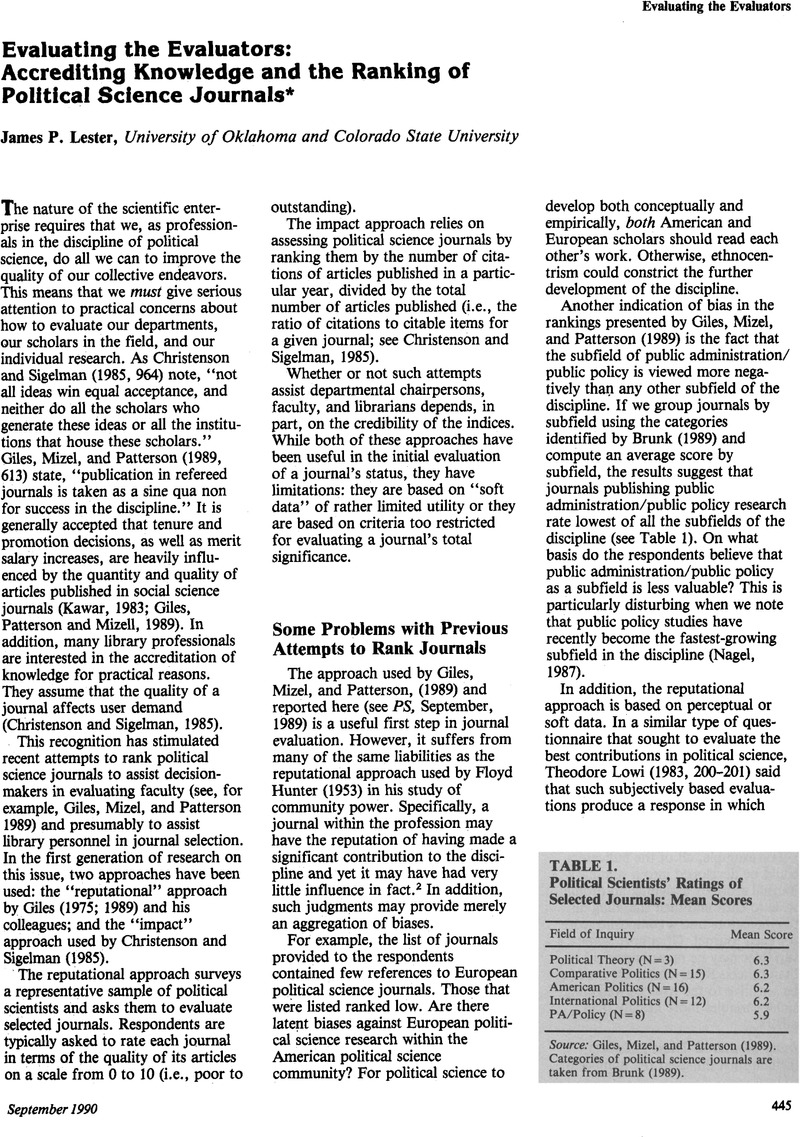Crossref Citations
This article has been cited by the following publications. This list is generated based on data provided by Crossref.
Crewe, Ivor
and
Norris, Pippa
1991.
British and American Journal Evaluation: Divergence or Convergence?.
PS: Political Science & Politics,
Vol. 24,
Issue. 3,
p.
524.
Lewis-Beck, Michael S.
and
Levy, Dena
1993.
Correlates of Publication Success: Some AJPS Results.
PS: Political Science & Politics,
Vol. 26,
Issue. 3,
p.
558.
Nisonger, Thomas E.
1993.
A Ranking of Political Science Journals Based on Citation Data.
Serials Review,
Vol. 19,
Issue. 4,
p.
7.
1997.
Erratum.
Asian Libraries,
Vol. 6,
Issue. 1/2,
p.
71.
Fisher, Bonnie S.
Cobane, Craig T.
Vander Ven, Thomas M.
and
Cullen, Francis T.
1998.
How Many Authors Does It Take to Publish an Article? Trends and Patterns in Political Science.
PS: Political Science & Politics,
Vol. 31,
Issue. 4,
p.
847.
Fisher, Bonnie S.
Vander Ven, Thomas M.
Cobane, Craig T.
Cullen, Francis T.
and
Williams, Nicolas
1998.
Trends in multiple-authored articles in criminology and criminal justice: A comparative analysis.
Journal of Criminal Justice Education,
Vol. 9,
Issue. 1,
p.
19.
Gorman, G. E.
and
Calvert, Philip J.
2001.
Journal Quality in the Asian Region.
The Serials Librarian,
Vol. 41,
Issue. 1,
p.
99.



